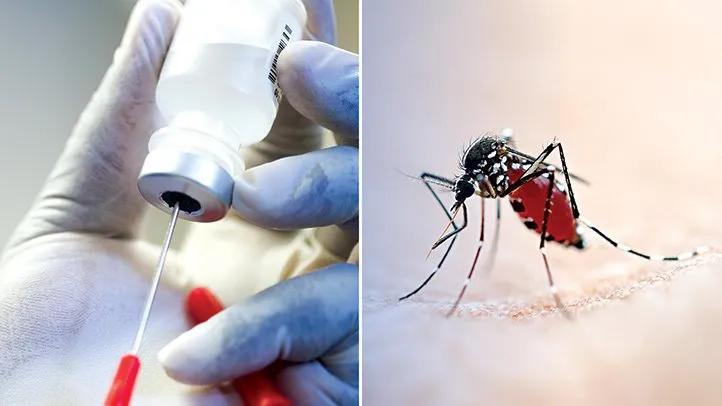Knowing About Malaria and How to Treat It
For ages, malaria has posed a threat to the entire world. Even though the illness still kills people, particularly in tropical and subtropical areas, modern medicine has given us a number of Malaria Treatment alternatives. However, what is the precise mechanism of malaria treatment? Let’s simplify and make things easier to grasp.
Malaria: What Is It?
People can contract malaria, a potentially fatal illness, by being bitten by an infected female Anopheles mosquito carrying parasites.
Malaria causes
Plasmodium falciparum is the most dangerous of the five Plasmodium parasite species that cause malaria. The parasites enter the human body, infiltrate red blood cells, grow, and produce the symptoms of the illness.
Symptoms of Malaria
Think of a bad flu—but worse. Common symptoms include:
High fever
Chills
Sweats
Headaches
Nausea and vomiting
Body aches
In severe cases, seizures or coma
The role of mosquitoes in the spread of malaria
The main offender is the female Anopheles mosquito. It spreads the parasite from an infected individual to a healthy one by biting at night.
Human Transmission
The parasite enters your bloodstream when the mosquito bites, moves to your liver, grows, and then explodes into your blood to cause mayhem.
Identification Prior to Therapy
You must be aware of the existence of an enemy before engaging in combat.
The Value of Early Identification
Early detection of malaria can make the difference between a moderate case and a serious, potentially fatal outbreak.
Rapid Diagnostic Tests (RDTs) are a common diagnostic technique.
Results from these tests are available in 15–20 minutes. They are ideal for usage in the field and in places where lab access is restricted.
The use of microscopy
It remains the gold standard. To find parasites, a lab technician looks at a blood smear under a microscope.
Options for Treating Malaria
After a diagnosis, treatment must start right away.
The antimalarial drugs
Combination therapies based on artemisinin (ACTs)
The first line of Malaria Treatment for P. falciparum malaria is ACTs. To avoid resistance, they take fast-acting artemisinin together with a companion medication.
Chloroquine
Chloroquine was once the preferred medication, but resistance has made it less effective in many areas. Nevertheless, it is still used to treat P. vivax in some places.
Quinine and Associated Substances
When ACTs are unavailable, this older medication is still used to treat severe malaria.
Therapy According to Plasmodium falciparum Malaria Type
This one is combative. ACTs are crucial, and in extreme situations, intravenous drugs can be needed.
Plasmodium malariae, ovale, and vivax
The liver may harbor these dormant. Primaquine is a medication used to eliminate these “sleeper cells” and stop relapses.
The Issues of Drug Resistance
A significant problem is drug-resistant forms of malaria, particularly P. falciparum. Combination Malaria Treatment are therefore necessary to eradicate the parasites as soon as possible and lower the likelihood of resistance.
Management and Supportive Care
Medication alone isn’t enough; your body also requires assistance.
Taking Care of Severe Malaria
Organ failure may result from severe malaria. Blood transfusions, IV fluids, hospitalization, and close observation can be necessary.
Hydration and Management of Fever
Treatment must also include basic steps like taking drinks and paracetamol for fever.
Cases of Hospitalization
Children, expectant mothers, and people with problems are examples of high-risk persons who would need careful observation in a hospital setting.
Preventing Malaria to Aid with Malaria Treatment
It’s always better to prevent than to treat.
Nets treated with insecticides (ITNs)
One of the easiest and most efficient ways to prevent mosquito bites is to sleep beneath a treated net.
Residual Spraying Indoors (IRS)
When dwellings are sprayed with insecticides, mosquitoes stay away for months.
Drugs for Prevention (Chemoprophylaxis)
Preventive medication can prevent malaria before it begins in tourists or those in high-risk locations.
Particular Aspects to Take Into Account When Treating Childhood Malaria
Children are especially at risk. Weight-based dosage adjustments are meticulously made, and early intervention is crucial to preventing problems.
Getting Malaria While Pregnant
Women who are pregnant are at twofold risk. Special medications are recommended to prevent negative side effects and protect both mother and child.
HIV Coinfection and Malaria
This combination may be harmful. When prescribing medications, doctors need to take drug interactions into account.
Strategies for Treating Malaria Worldwide
WHO Guidelines
Based on the most recent studies and field data, the World Health Organization routinely changes its recommendations for treating malaria.
National Programs for the Control of Malaria
Particularly in rural and high-risk areas, many nations have specific programs that offer free or heavily discounted malaria Malaria Treatment.
NGOs’ and international partnerships’ roles
Organizations such as the Global Fund and the Gates Foundation play a crucial role in providing life-saving drugs and financing research in underdeveloped areas.
Research on Malaria Vaccines and Their Prospects for Malaria Treatment
Promising vaccines include RTS and S/AS01 (Mosquirix). They’re not a panacea just yet, but they’re a positive start.

Emerging Novel Antimalarial Medicines
Next-generation medications that are less likely to develop resistance and more effective are being developed by researchers.
Controlling Mosquitoes with Genetic Engineering
Science fiction is coming true, from sterilizing mosquitoes to altering their genomes to prevent the spread of parasites.
Conclusion
Although there has been significant progress in treating malaria, the fight is still ongoing. We can control and even eradicate this illness with early discovery, appropriate Malaria Treatment, and preventative measures. Knowing how to cure malaria is a first step toward a healthier, malaria-free future, regardless of whether you’re a visitor, a medical professional, or a resident of an endemic region.



